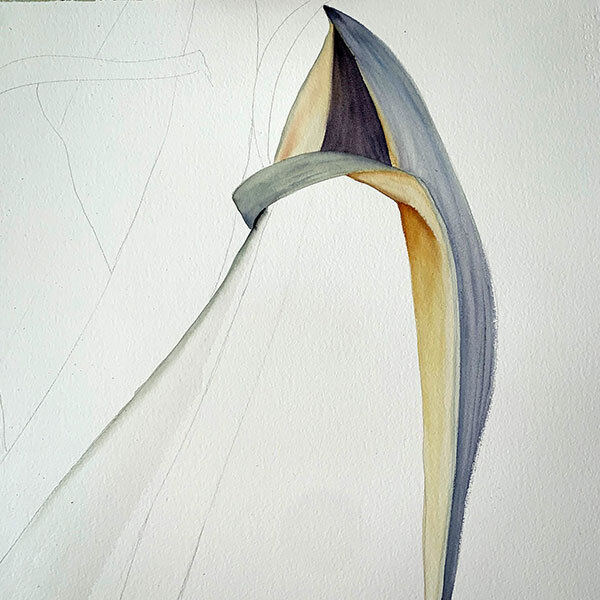Speaking isn’t our first form of communication. It takes time to learn to vocalize our thoughts —
to even realize we’re having thoughts!
Scribbling often comes before speaking. It precedes drawing, painting, and writing, too.
Drawing (refined scribbling), painting, and writing help me verbalize my thoughts and feelings.
I recently read an interview with an artist in which the art critic asked if she considered herself a commercial or fine artist.
Ohmygoodness, the thoughts that ran through my head when I read that question!
I wrote them down to be released so I could resume my own creative journey.
This was a paradigm-shifting moment for me. (You’ll be reading more about paradigms for a while.)
This is the second painting of my Paradigm Shift Series.
This question felt like the clash of the ancient “starving artist” paradigm and the (I hope) emerging “Living Artist” paradigm.
The one in which we don’t have to starve and die before we’re compensated or recognized for the work that we do.
Why do we insist on creating hierarchies instead of appreciating all things as they are?
Why is one form of art considered “higher” than another? One form of art might be more pleasing to you than another,
and one might have an entirely different purpose than the other.
Art is a form of communication.
Art can set the mood, the tone of your room, office, or home. It can also help connect one room to another.
Presumably, the art you put on your walls is art that you like.
That might seem like a “no-brainer,” but it’s easy to worry that you don’t know enough about art to choose the “right art” for your walls.
Whether it fits with the “décor of the day” is far less important than whether it makes you smile.
Does the image or item bring you joy? Does it tickle your fancy?
Does it pique your curiosity? Does it make you think?
Does it make you hungry (think kitchen or dining area)?
Is the image soothing or energizing? Would it work best in a bedroom or a more active living space?
Do you like the colors, the movement, or the energy in the imagery? Will it help you to feel at home?
Art can affirm something you feel about your life or that you want to feel more of in your life.
Most importantly, do your lips turn up or turn down when you look at the piece in question?
The point is that you get to choose —
without making anyone else “wrong” in their choice.
Remember, you can always ask the artist for assistance when looking for complementary pieces.
To read more about choosing art for your or office home decor, check out this blog from Redfin.com



















